The CIO’s Guide to Contextual Intelligence
by Aware
First Published Oct. 2023. Updated Mar. 2024.
Artificial intelligence (AI) is not a monolith. While generative AI has dominated headlines for its ability to create images or write emails, contextual AI offers a far more nuanced and sophisticated way of incorporating artificial intelligence into modern enterprise workflows. Read on to discover the world of contextual AI, explore how it's reshaping information management, and understand its potential for enterprises.
What is Contextual AI?
Contextual AI understands and responds to the world around it, taking context into account to provide more relevant and personalized solutions. It utilizes real-time data and factors such as user location, preferences, and historical interactions to deliver more nuanced, authentic, and actionable insights.
Contents
- Contextual Intelligence: The Future of Information Management
- How is Contextual AI Different from Generative AI?
- Understanding Human-Centered Intelligence
- The Benefits of Contextual Intelligence
- Examples of Contextual Intelligence
- Current Problems in Information Management
- Evolving Problems in Information Management
- How Contextual AI Can Help CIOs
- How Contextual AI Impacts Enterprise Businesses
- How Generative AI Unlocks Contextual AI Insights
- How Aware Uses Contextual and Generative AI
Contextual Intelligence: The Future of Information Management
Enterprises are increasingly harnessing the power of contextual AI to gain valuable insights from the vast amounts of data generated by the digital transformation. The modern workplace is filled with collaboration, productivity, workflow, project management, and time tracking tools that create longitudinal datasets packed with information about every aspect of the way the business runs.
Everything from equipment outages and supplier delays to training failures, customer complaints, and employee innovation can be tracked and analyzed if leadership have the tools to do so. Contextual AI provides those capabilities, able to ingest this data and analyze it in real time to deliver a continuous pulse on the health and success of the organization.
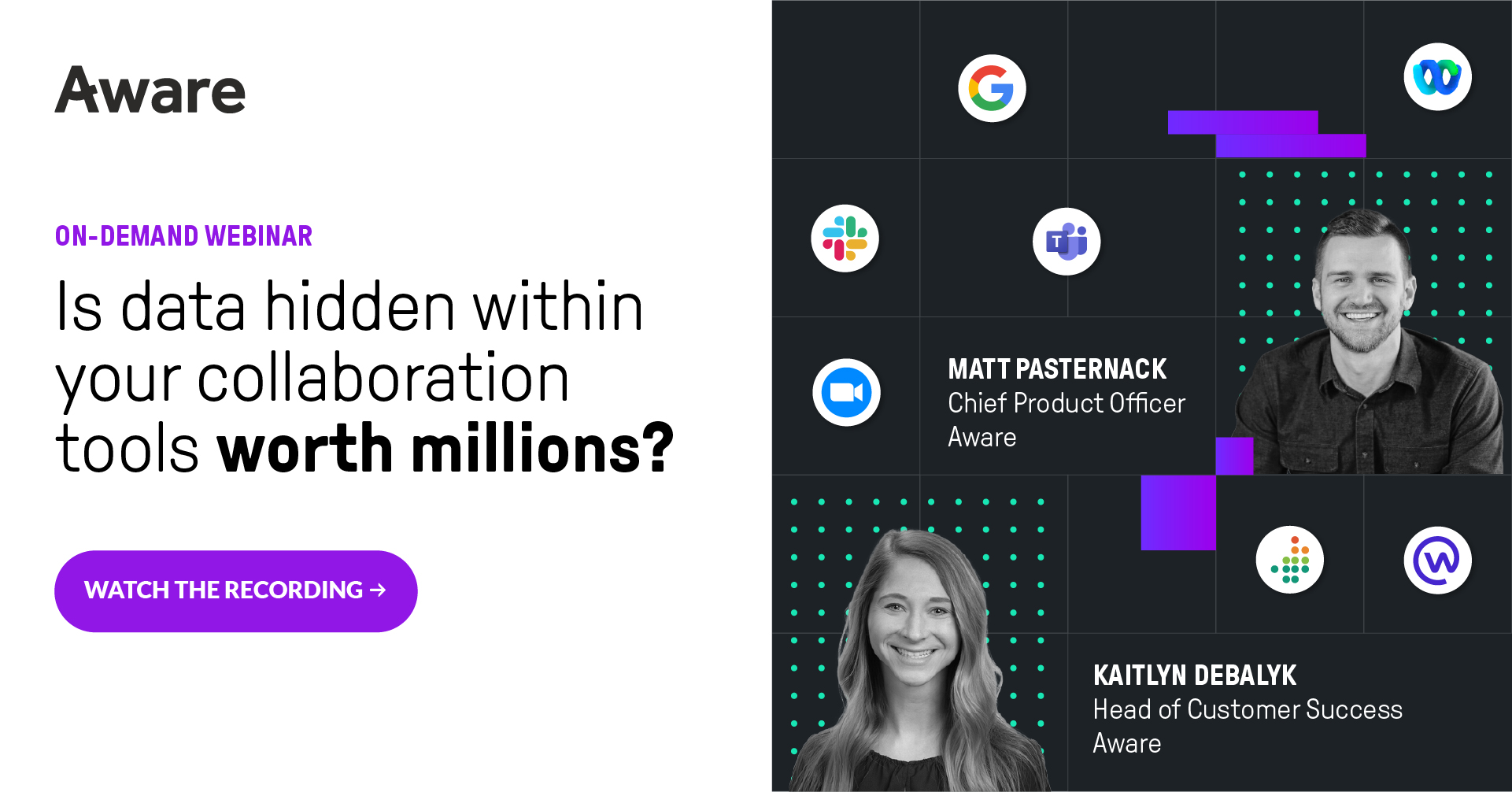
Discover how forward-thinking leaders are using contextual AI in collaboration tools
How is Contextual AI Different from Generative AI?
Contextual AI and generative AI are two distinct technologies within the field of artificial intelligence, each with unique characteristics and applications. Generative AI is a probabilistic model that creates text or images based on learned patterns ingested from trillions of pieces of content. While often associated with creative output like art and literature, generative AI can also be used within business settings to run chatbots, summarize large datasets, and enhance search results.
Contextual AI, by comparison, focuses on understanding and responding to the context in which it operates. Rather than duplicating patterns it has learned, contextual AI’s outputs are based on real-time inputs, giving them a higher degree of relevancy and accuracy. Because of this, contextual AI systems offer far more nuanced responses that meet the precise needs of the end user.
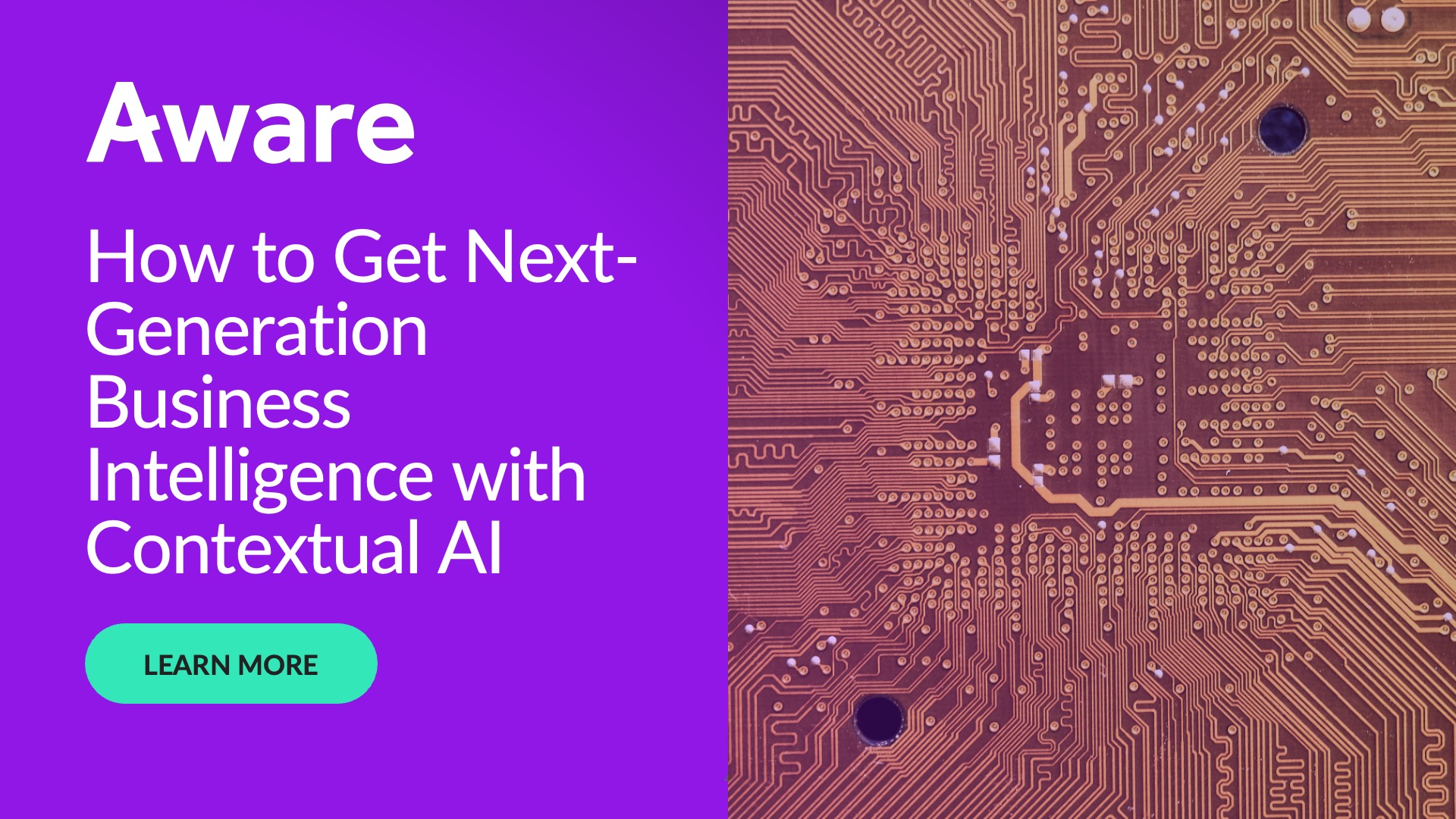
Learn how to unlock the value hidden within the data you already hold
Understanding Human-Centered Intelligence
Contextual AI enables organizations to identify patterns of behavior and risk with unprecedented accuracy. Enterprises are eager to incorporate this technology to create a more informed, proactive, and secure environment for their employees and customers.
Human-centered intelligence involves technologies such as natural language processing (NLP) that were developed with a primary focus on improving the lives and experiences of humans by interpreting and understanding human behavior. This is essential for any employee listening technology, as human interactions are filled with nuance and complexity—the placement of an emoji or punctuation mark can invert the meaning of written communication, while seemingly polite phrases can indicate passive-aggression or frustration (“per my last email”).
Aware’s contextual AI is based on industry-leading, proprietary NLP, built and trained specifically on short-form collaboration messages. These chatty, conversational communications are vastly different to the more formal structure of email or letters, and present new challenges in understanding context and subtext.
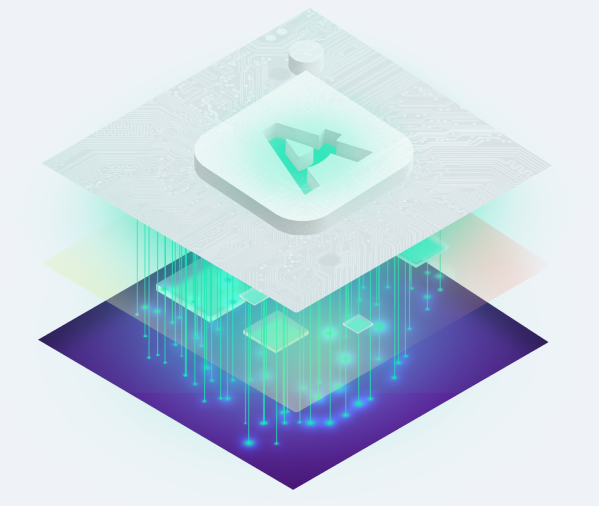
Learn more about Aware's groundbreaking AI and NLP
The Benefits of Contextual Intelligence
Contextual intelligence insights can offer numerous business advantages by being able to spot trends and patterns at scale. Instead of relying on gut instinct or what employees report—which may be what they think you want to hear, not the truth—executives can gain authentic, 360-degree oversight into all the moving aspects of the business that informs data-driven decisions in real time. Some possible outcomes include:
- Operational efficiency, from supply chains to equipment uptime
- Optimized processes, including workflows, chain-of-command, reporting and more
- Top-line Growth, from streamlined feedback and accelerated productivity
- Enhanced Employee Experience, by listening authentically to what they really want
- Improved Customer Experience, because happy employees provide better service
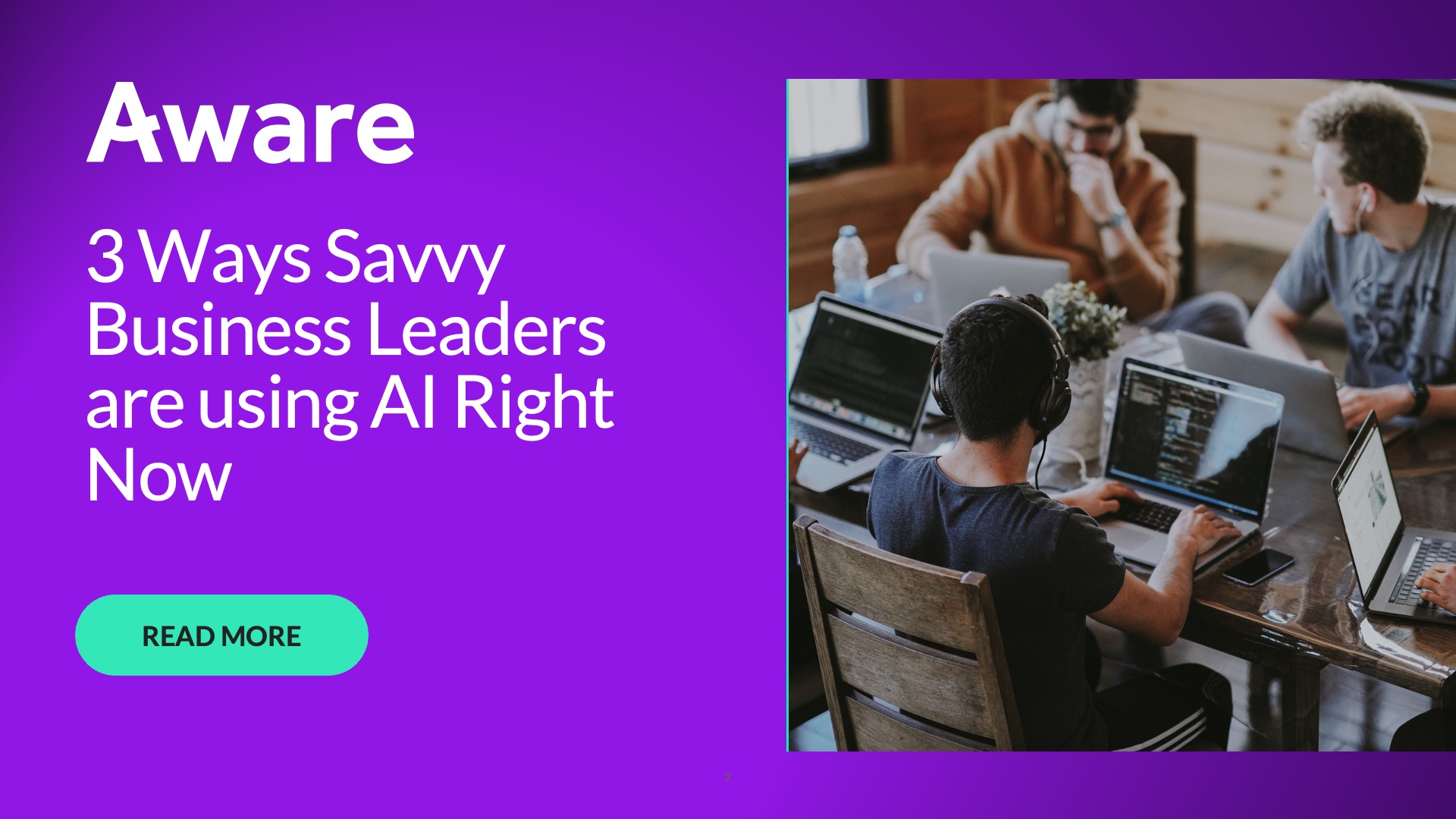
Discover how top business leaders are using AI to build contextual awareness
Examples of Contextual Intelligence
Contextual AI sounds great in theory, but what does it look like in practice? Some examples of CI in action include:
- Replacing slow-moving surveys with real-time insights from internal collaboration tools like Slack, Microsoft Teams, and Zoom
- Establishing workflows that automatically detect and flag information security breaches as they occur
- Enforcing acceptable use policies and monitoring for regulatory compliance within electronic systems
- Using sentiment analysis to understand and protect company culture and proactively detect areas of heightened insider risk
- Performing more efficient and effective eDiscovery, internal investigations, and early case assessment into complex datasets
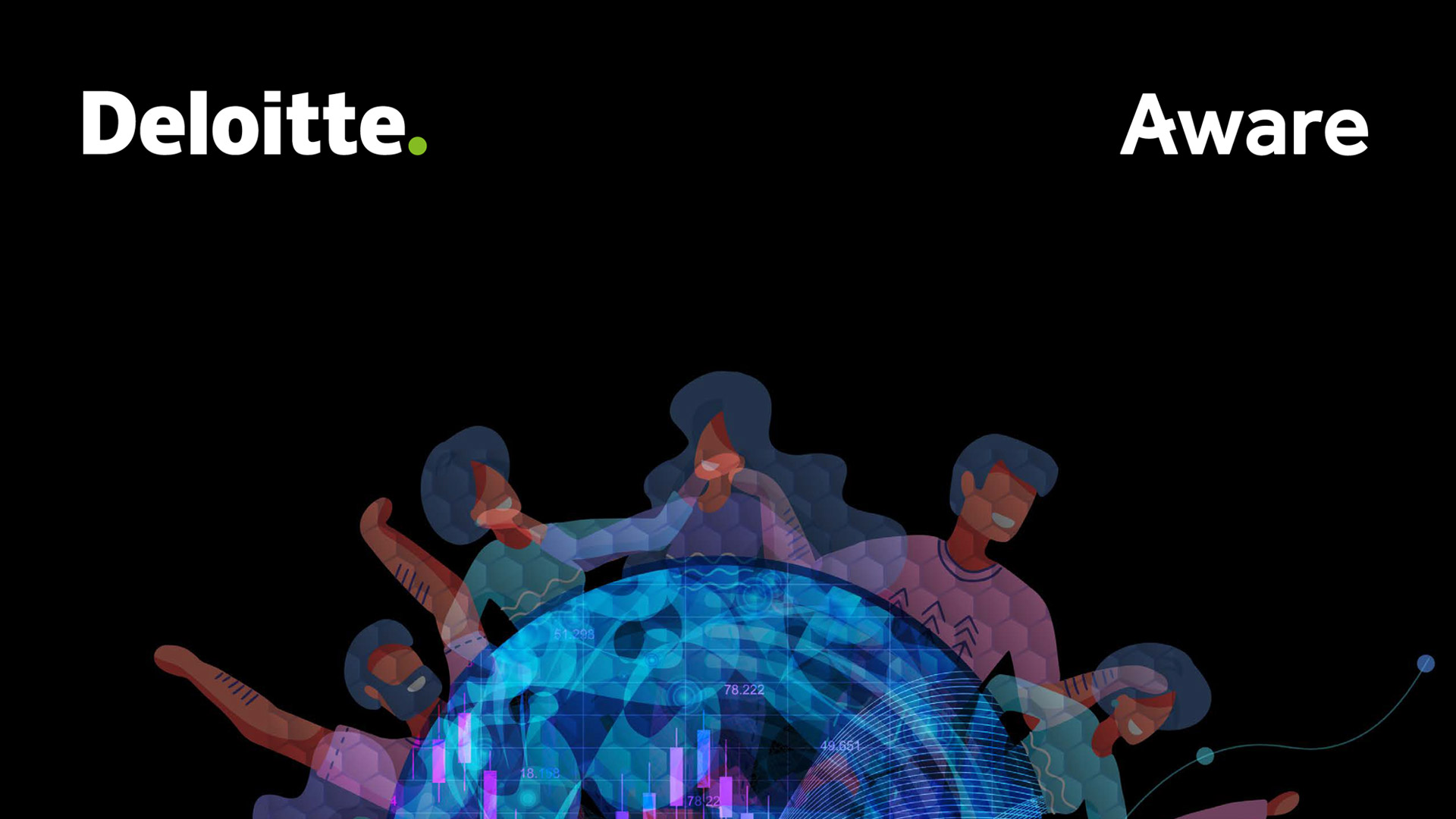
Learn how to uncover your organization's sentiment data
Contextual intelligence is transforming the ways innovative businesses approach and utilize the data generated by the tools of the digital transformation. From chat applications like Slack and Microsoft Teams, to enterprise social networks like Workplace from Meta, productivity and scheduling applications like WorkJam, and cloud-based storage solutions like Google Drive, more and more of the modern enterprise is happening online, and it’s creating large, complex, but incredibly powerful datasets that can—and should—be harnessed to provide value, drive productivity, and accelerate growth.
Current Problems in Information Management
Traditionally, issues such as compliance, employee retention, and data breaches have been addressed reactively rather than proactively. Since the advent of the digital transformation, and especially in a post-Covid, hybrid world of work, the task of conducting investigations and evaluating data has become overwhelmingly complex.
Information management teams struggle to sift through vast amounts of data that is often scattered across unmoderated or difficult-to-moderate spaces. The challenges associated with even accessing information from multiple tools and repositories prolongs time to discovery and extends timelines beyond what is reasonable, leaving organizations vulnerable for extended periods.
How long does it currently take to investigate reports of bullying and harassment in collaboration tools? Or to determine if an inside actor was exfiltrating documents from cloud storage? Or to identify a breached account before it could access the company’s most sensitive data?
Today’s online tools and platforms are packed with blind spots where bad actors can move unseen and toxicity can flourish. Over 90% of Slack messages are sent in direct and private channels where not even administrators may have full visibility into the conversation. Cloud apps are accessible anywhere, from any device, and can instantly sync vast amounts of information beyond the company’s control. To work effectively in this space, information security and management teams must find new solutions that can mitigate these problems, and contextual AI from Aware is providing the answer.
Control and protect your digital workplace. Learn how Aware supports and empowers security teams
Evolving Problems in Information Management
The challenges faced by information security and management teams are not static, but still evolving. The ever-expanding list of tools and platforms that companies rely on is continuously growing, creating more complexities in employee communication.
Equally, employees are becoming more confident in their use of these tools, and their communications are more relaxed as a result. The frequent use of slang, shorthand, emojis, gifs and more makes it harder to understand context from subtext, and with higher levels of workers choosing remote or hybrid work schedules, the volume of digital conversations continues to increase.
Furthermore, regulators have caught up to the kinds of information risks that live within these datasets. New rules such as SEC 17a-4 govern security and retention in digital records, meaning corporate compliance posture must be reevaluated on a regular basis.
How Contextual AI Can Help CIOs
Chief Information Officers can benefit immensely from deploying contextual AI to support a range of investigatory, compliance, and operational needs that solve challenges across the business, not just within IT departments. In addition, contextual AI can help simplify IT tech stacks, consolidating HR, compliance, security, and legal workflows into a single centralized platform.
Using this technology, data-driven CIOs can leverage existing datasets to provide executives with a real-time picture of every aspect of the organization. By proactively eliminating blind spots and illuminating new opportunities, contextual AI enables CIOs to lead with confidence and agility in the future of work.
How Contextual AI Impacts Enterprise Businesses
When used effectively, contextual AI provides immeasurable benefit to modern enterprises by cutting through the noise and complexity of the data created by the digital office to pinpoint the risks and opportunities it contains. From reducing compliance and security risks to improving operational efficiency and elevating the employee experience, contextual AI is delivering tangible benefits by surfacing the insights and observations of employee voices at scale.
- In September 2023, the SEC fined 10 financial institutions a combined $79 million for failing to properly secure electronic workplace communications
- The average 1000-employee workplace shares credit card numbers in collaboration tools 45 times a month
- Outsourced eDiscovery is slow and expensive—averaging $18,000 per GB of data
- Voluntary turnover costs US businesses $1 trillion every year
Solving the challenges of employee retention, information security, compliance, and eDiscovery can all be accomplished from a centralized solution leveraging contextual AI to reveal insights in data that enterprises already hold.
How Generative AI Unlocks Contextual AI Insights
Contextual AI is a powerful innovation, but it comes with a challenge–the potential to inundate users with too much data. The sheer volume of results generated by contextual AI can make it challenging to decide what information is truly actionable and how to best leverage it. This is where Aware steps in, providing a solution by pairing the outputs of contextual AI with generative AI summaries. This allows businesses to instantly surface the most significant insights from their data.
With Aware, users can swiftly gain an overview of where potential risks and opportunities lie within their data landscape. Additionally, they can better understand which topics are exerting the most influence on employees and devise strategies for addressing them effectively. And Aware simplifies the process of generating easy-to-read summaries and action items to present to executives and board members, enabling more informed decision-making at all levels of an organization.
How Aware Uses Contextual and Generative AI
The Aware data platform combines the industry’s most accurate contextual AI with reliable, actionable generative AI summaries that pinpoint the most critical action items for faster decision-making that reduces the burden of data analysis. Aware’s artificial intelligence and machine learning models were designed and trained on a closely curated, hand-labeled dataset of real collaboration message and are continually refreshed and refined against billions of tokens to ensure they consistently deliver the most accurate, relevant results.
The majority of commercially available generative AI solutions, such as ChatGPT, rely on large language models (LLMs) that use massive, indiscriminate datasets, resulting in misleading or inaccurate outputs. By contrast, the generative AI outputs produced by Aware are managed within a single, secure environment to protect sensitive company data. Users are also able to access anonymized verbatims that informed the outputs, ensuring the results produced by Aware’s generative AI are both accurate and easily traceable.
As more and more companies turn to AI to drive productivity and efficiency in the future of work, it’s essential that leaders understand the capabilities and potential shortfalls of the solutions they implement. Contextual AI has the power to transform every aspect of the modern enterprise. By combining these insights with secure, accurate generative AI summaries, Aware is making contextual AI outputs more accessible and actionable than ever before. Schedule a call today to learn more about how Aware can help you.








